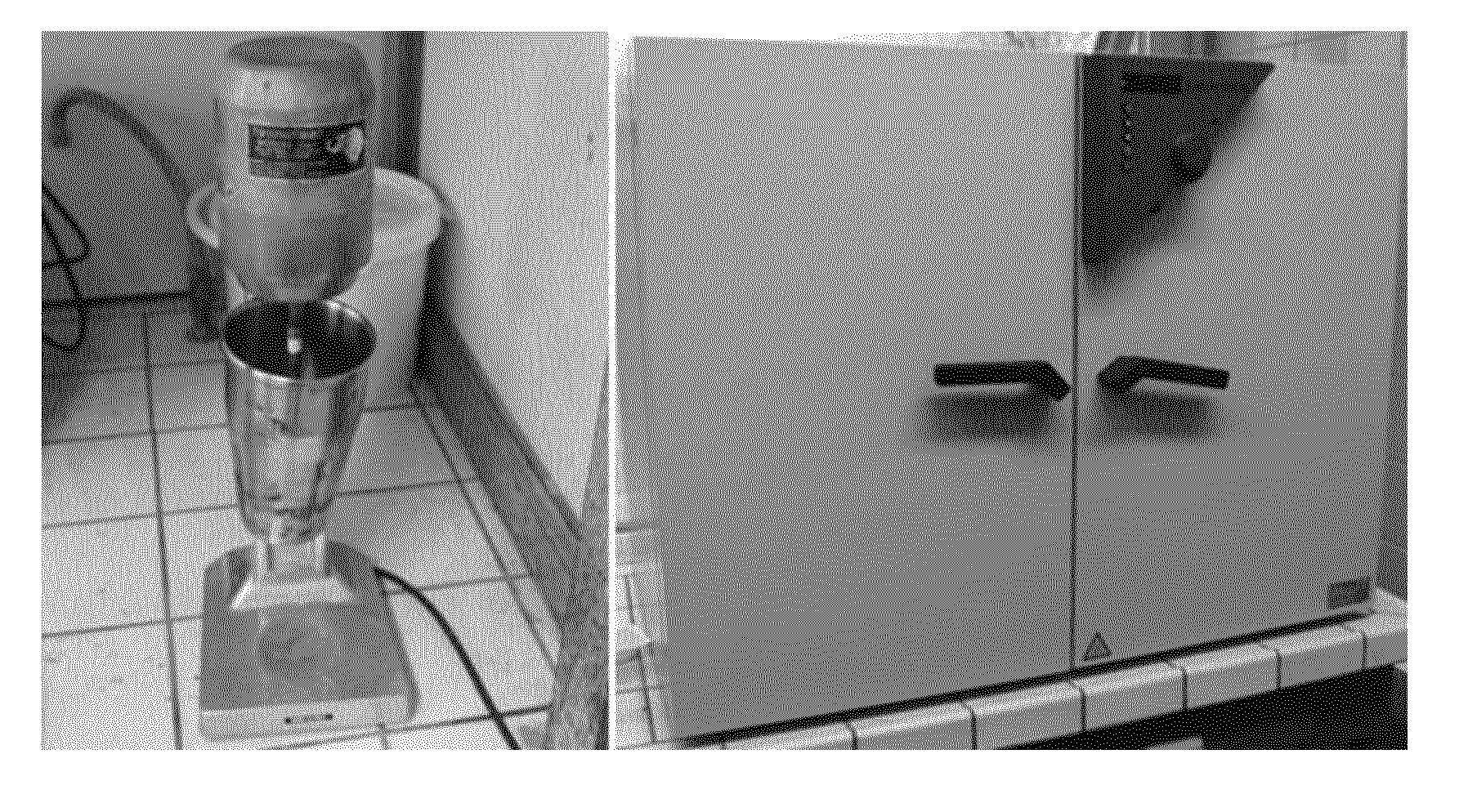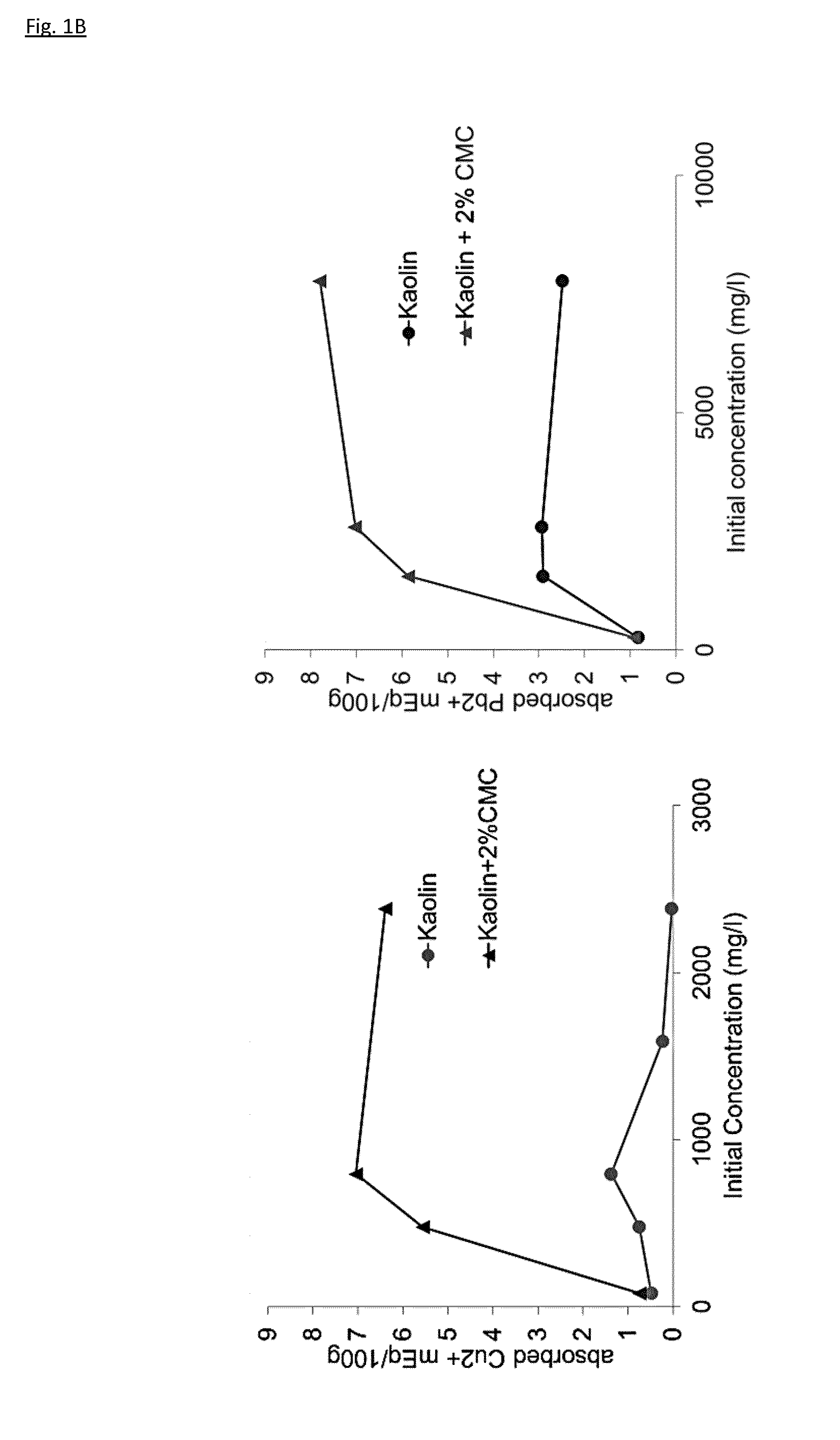Treatment of clay or dredged sediment with polymer increases adsorption characteristics
- Summary
- Abstract
- Description
- Claims
- Application Information
AI Technical Summary
Benefits of technology
Problems solved by technology
Method used
Image
Examples
examples
Materials and Solutions
[0040]Two base materials were used. One is a commercially processed kaolin (K) (Rotoclay 11B® from St. Austell, UK) and the other is a dredged sediment (DS), dredged by DEME from the Kluizendok in Ghent. Both materials were treated with an anionic polymer, Sodium CarboxyMethylCellulose (Na—CMC). The adsorption test was performed as a batch sorption test following ASTM D4646, in which the untreated and treated soils (K and DS) were mixed with MgCl2, Cu(NO3)2, and Pb(NO3)2 solutions with different concentrations and then again separated. By measuring the amount of Mg2+, Cu2+, Pb2+ cations, before and after the batch sorption test, the adsorption characteristics can be analyzed.
[0041]Some solutions were used in the realization of this test: 1) Deionized water and 2) a series of various MgCl2, Cu(NO3)2, and Pb(NO3)2 solutions with different concentrations. The deionized water was produced in the laboratory by a PURELAB Option-R 7 / 15 Elga water treatment apparatus....
PUM
| Property | Measurement | Unit |
|---|---|---|
| Temperature | aaaaa | aaaaa |
| Temperature | aaaaa | aaaaa |
| Fraction | aaaaa | aaaaa |
Abstract
Description
Claims
Application Information
 Login to View More
Login to View More - R&D
- Intellectual Property
- Life Sciences
- Materials
- Tech Scout
- Unparalleled Data Quality
- Higher Quality Content
- 60% Fewer Hallucinations
Browse by: Latest US Patents, China's latest patents, Technical Efficacy Thesaurus, Application Domain, Technology Topic, Popular Technical Reports.
© 2025 PatSnap. All rights reserved.Legal|Privacy policy|Modern Slavery Act Transparency Statement|Sitemap|About US| Contact US: help@patsnap.com



